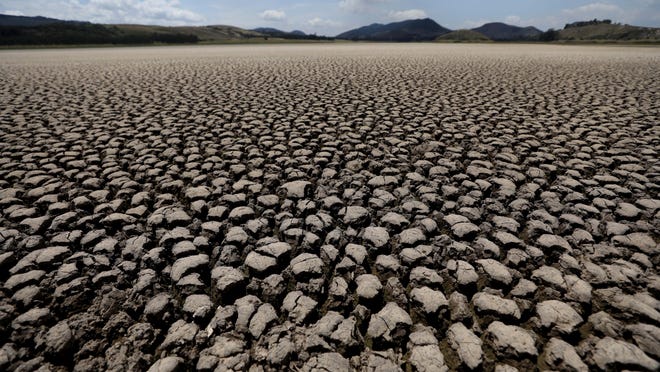Roughly 6 millions Southern California residents began June with new water restrictions, as state officials continue to implement water conservation efforts amid the state’s worst drought in recorded history.
Beginning on June 1, residents and businesses in Los Angeles, San Bernardino and Ventura counties will have to limit their outdoor water usage to one or two days a week or have water volume restrictions, the Metropolitan Water District of Southern California (MWD) announced. In addition, all Southern California residents are being asked to cut the water usage by 20%-30%.
The affected agencies are: Calleguas Municipal Water District, Inland Empire Utilities Agency, Las Virgenes Municipal Water District, Los Angeles Department of Water and Power, Three Valleys Municipal Water District, and Upper San Gabriel Valley Municipal Water District.
Agencies like the Las Virgenes Municipal Water District and the Los Angeles Department of Water have put restrictions where certain addresses can only water on certain days and during the early morning or evening.
The MWD uses water from the Colorado River and California’s State Water Project to supply 26 public water agencies that provide water to 19 million people, or 40% of the state’s population. The MWD said the State Water Project are delivering water at record lows as “a result of limited snowpack and reservoirs depleted by three years of drought,” the MWD said in a news release.
More restrictions could come
The state is currently in its third year of drought, with almost all of California and much of the Western U.S. in severe to extreme drought, according to the U.S. drought monitor. A February study said the Southwest drought is the worst the country has faced in 1,200 years, and it will “very likely persist through 2022.”
After the last drought, the state started requiring cities and other water districts to submit drought response plans that detail six levels of conservation based on how much water is available, with districts setting their own rules for restrictions implemented at each level.
But this might not be the end of the restrictions Californians face; Gov. Gavin Newsom said in a statement last week if this localized approach doesn’t improve water conservation, mandatory restrictions may be put in place as early as September, nearly one year after he asked California residents cut their water use by 15%.
“Every water agency across the state needs to take more aggressive actions to communicate about the drought emergency and implement conservation measures,” Newsom said. “Californians made significant changes since the last drought but we have seen an uptick in water use, especially as we enter the summer months. We all have to be more thoughtful about how to make every drop count.”
Lake Mead drought: Man found in barrel in Lake Mead amid drought was shot; more bodies likely to turn up
For subscribers: Temperature records broken across the US as UN warns of continued climate disruption
In March, the state’s water use went up dramatically, up 19% compared to the same month in 2020, as the MWD said that the 2020 and 2021 water years had the least rainfall on record for two consecutive years. Local agencies who fail to meet the restriction can be fined up to $2,000 per acre foot of water.
“People need to take these restrictions seriously. There is not enough SWP water coming from Northern California this year to meet normal demands. So we must do everything we can to lower our use and stretch this limited supply,” Metropolitan general manager Adel Hagekhalil said in a statement. “If residents and businesses don’t respond immediately, we’ll have to take even stronger action.”
Contributing: Janet Wilson, Palm Springs Desert Sun; Associated Press
Follow Jordan Mendoza on Twitter: @jordan_mendoza5.


